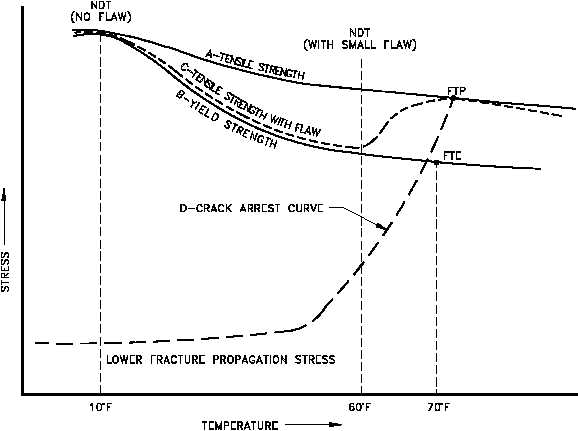Brittle Fracture
DOE-HDBK-1017/2-93
BRITTLE FRACTURE MECHANISM
Stress-Temperature Curves
One of the biggest concerns with brittle fracture is that it can occur at stresses well below the
yield strength (stress corresponding to the transition from elastic to plastic behavior) of the
material, provided certain conditions are present. These conditions are: a flaw such as a crack;
a stress of sufficient intensity to develop a small deformation at the crack tip; and a temperature
low enough to promote brittle fracture. The relationship between these conditions is best
described using a generalized stress-temperature diagram for crack initiation and arrest as shown
in Figure 2.
Figure 2 illustrates that as the temperature goes down, the tensile strength (Curve A) and the
Figure 2 Stress-Temperature Diagram for Crack Initiation and Arrest
yield strength (Curve B) increase. The increase in tensile strength, sometimes known as the
ultimate strength (a maximum of increasing strain on the stress-strain curve), is less than the
increase in the yield point. At some low temperature, on the order of 10F for carbon steel, the
yield strength and tensile strength coincide. At this temperature and below, there is no yielding
when a failure occurs. Hence, the failure is brittle. The temperature at which the yield and tensile
strength coincide is the NDT temperature.
Rev. 0
Page 3
MS-04

